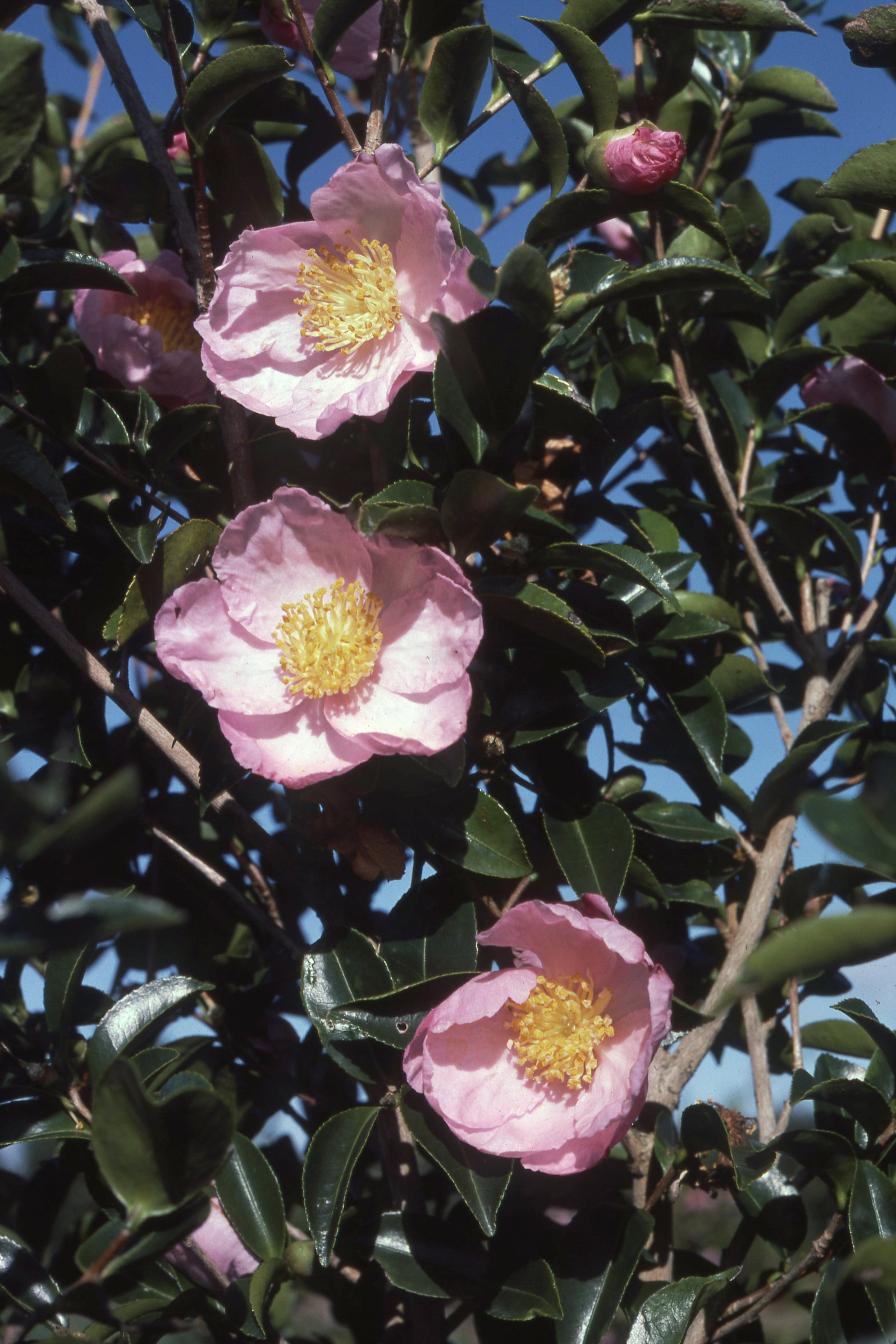Physical characteristics
An upright,
Flowers and foliage
From autumn to early winter, this camellia produces large, soft
Preferred site
Prefers moist, well-drained soil and a shelte
Preparation for planting
Always choose healthy, well-grown
Maintenance tips
Mulch
Camellias growing in acidic soil will benefit from an application (50g/m2) of dolomite lime every three years. In spring, apply an organic mulch to keep surface roots cool and moist through summer. Water in
Large camellias will re-grow from bare wood after heavy pruning. However, light
Pests and diseases
In spring, new growth is susceptible to attack by leaf-roller caterpillars. These can be removed by hand. Also, check for aphids and the nymph stage of thrips. Camellia petal blight is becoming a problem in the Auckland region, affecting many late-flowering Camellia hybrids and cultivars. This blight causes the flower to rot from the centre outwards, leading to premature flower drop. Any flowers showing symptoms should be removed immediately.
Location at Auckland Botanic Gardens
Camellia Garden
Interesting facts and tips
Camellia gardening in China goes as far back as the ninth century. These
Camellia vary from low-growing, spreading
Camellia are well suited to growing in Auckland conditions.




.jpg?width=1200&height=1200&v=1d4024dceb89e50)

.jpg?width=1200&height=1200&v=1d5569224d63650)
 .jpg?width=1200&height=1200&v=1d4024df6ce2770)
.jpg?width=1200&height=1200&v=1d55676a892f2b0)
 .jpg?width=1200&height=1200&v=1d4024e3b65f7f0)